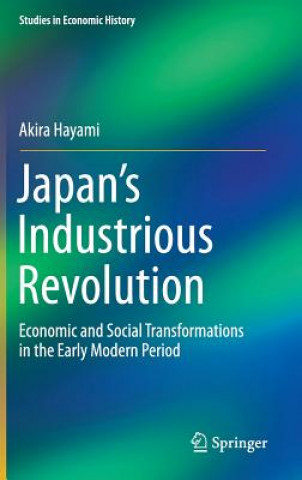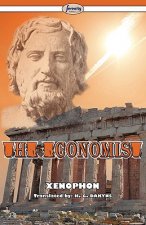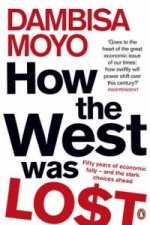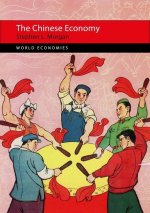
Kod: 07175758
Japan's Industrious Revolution
Autor Akira Hayami
This book explains in fascinating detail how the fruits of the Industrious Revolution are what have supported Japan since the eighteenth century, improving living standards and leading to the formation of the work ethic of modern ... więcej
- Język:
 Angielski
Angielski - Oprawa: Twarda
- Liczba stron: 130
Wydawca: Springer Verlag, Japan, 2015
- Więcej informacji o książce

58.29 €

Dostępna u dostawcy w małych ilościach
Wysyłamy za 10 - 14 dni
Potrzebujesz więcej egzemplarzy?Jeżeli jesteś zainteresowany zakupem większej ilości egzemplarzy, skontaktuj się z nami, aby sprawdzić ich dostępność.
Dodaj do schowka
Zobacz książki o podobnej tematyce
-

Business Vocabulary in Use Third Edition
36.15 € -5 % -

Fairy Tale
32.35 € -2 % -

Deadpool: Samurai, Vol. 2
10.51 € -18 % -

How to Draw: Harry Potter
17.22 € -18 % -

Ten Thousand Apologies
22.93 € -18 % -

Lonely Planet Under the Stars - Europe
22.53 € -12 % -

Assassin's Quest
45.37 € -18 % -

I'm Rather...Fond of You.
19.02 € -9 % -

GMAT Foundations of Math: 900+ Practice Problems in Book and Online
31.15 € -4 % -

Katanagatari 2
25.84 € -15 % -

Nightlights
10.61 € -13 % -

On the Shoulders of Giants: LotFP Compatible
10.41 € -6 % -

Royal Assassin
10.31 € -29 % -

Maritime Security and the Law of the Sea
226.59 € -

RHS Botany for Gardeners
17.52 € -27 % -

Question of Honor
13.71 € -28 % -

Problem With Forever
9.71 € -20 % -

Germinal
10.31 € -16 % -

Gentle Discipline
19.02 € -5 % -

Collection Assessment in Music Libraries
61.30 € -

Codes
232.30 €
Bon podarunkowy: Radość gwarantowana
- Podaruj bon o dowolnej wartości, a my się zajmiemy resztą.
- Bon podarunkowy dotyczy całej naszej oferty.
- Możesz wydrukować elektroniczny bon z e-maila a następnie przekazać go obdarowanemu.
- Ważność bonu wynosi 12 miesięcy od daty wystawienia.
Więcej informacji o Japan's Industrious Revolution
Za ten zakup dostaniesz 147 punkty
 Opis
Opis
This book explains in fascinating detail how the fruits of the Industrious Revolution are what have supported Japan since the eighteenth century, improving living standards and leading to the formation of the work ethic of modern Japan.§§The arrival of the Sengoku Period in the sixteenth century saw the emergence and domination of government by the warrior class. It was Tokugawa Ieyasu who unified the realm. Yet this unity did not give rise to an autocratic state, as the shogun was recognized merely as a main pillar of the warrior class.§§Economically, however, from the fourteenth century, currency payments for sh en nengu (taxes paid to the proprietor) became standard, and currency circulation began, primarily in the central region. Under Tokugawa rule, organized domestic coinage of currency began, opening the way to establishing a national economic society. Also, agricultural land was surveyed through cadastral surveys known as kenchi . Land values were converted in terms of rice, so the expected rice yields for each village were assessed, and the lords used this as a benchmark for imposing taxes.§§In the sixteenth and seventeenth centuries, Japan experienced a great transition, and conditions for peasants, agriculture, and farming villages underwent great changes. Inefficient traditional agriculture using peasants in a state of servitude was transformed into highly efficient small-sized farming operations which relied on family labor. As production yields increased due to labor-intensive agriculture, the profits obtained by the peasants improved their living standards. The stem-family system became the norm through which work ethics and even literacy were transmitted. This very change was the result of the industrious revolution in Japan.§§The book thus presents the framework of the facts of pre-industrial Japanese history and depicts pre-modern Japan from a macroscopic point of view, showing how the industrious revolution came about. It is certain to be of great interest to economists and historians alike.§
 Szczegóły książki
Szczegóły książki
Kategoria Książki po angielsku Economics, finance, business & management Economics Economic history
58.29 €
- Pełny tytuł: Japan's Industrious Revolution
- Podtytuł: Economic and Social Transformations in the Early Modern Period
- Autor: Akira Hayami
- Język:
 Angielski
Angielski - Oprawa: Twarda
- Liczba stron: 130
- EAN: 9784431551416
- ISBN: 4431551417
- ID: 07175758
- Wydawca: Springer Verlag, Japan
- Waga: 3554 g
- Wymiary: 235 × 155 × 243 mm
- Data wydania: 19. May 2015
Ulubione w innej kategorii
-

Debt
21.83 € -21 % -

Long Twentieth Century
22.43 € -26 % -

Extraordinary Popular Delusions and the Madness of Crowds (Harriman Definitive Editions)
29.94 € -28 % -

Why Nations Fail
16.52 € -6 % -

Capital in the Twenty-First Century
23.43 € -5 % -

World Order - Our Secret Rulers
28.04 € -

Economist
10.41 € -

Global Economic History: A Very Short Introduction
9.21 € -28 % -

Progress and Poverty
25.13 € -28 % -

The Wisdom of Crowds
16.12 € -12 % -

Fifty Things that Made the Modern Economy
11.61 € -18 % -

Why Nations Fail
29.04 € -13 % -

Monetary History of the United States, 1867-1960
68.91 € -17 % -

Wall Street and FDR
13.11 € -28 % -

Dark Towers
13.81 € -22 % -

Courage to Act
27.74 € -22 % -

Finance as Warfare
26.64 € -2 % -

Essays in Persuasion
89.15 € -

Money Changes Everything
21.23 € -15 % -

Power of Gold
18.02 € -24 % -

Capitalism without Capital
15.92 € -19 % -

Exorbitant Privilege
12.21 € -28 % -

Wall Street Trilogy
35.85 € -

Capitalism in America
13.71 € -21 % -

Capital in the Twenty-First Century
18.92 € -36 % -

Capitalism without Capital
43.77 € -10 % -

Concise Economic History of the World
183.72 € -

World in Depression, 1929-1939
36.25 € -

Great Crash 1929
12.91 € -28 % -

Double Entry
14.32 € -24 % -

Japanese Economy
30.94 € -3 % -

Commercial Revolution of the Middle Ages, 950-1350
27.44 € -

How The West Was Lost
12.21 € -21 % -

Grand Pursuit
14.12 € -26 % -

Chinese Economy
30.44 € -5 % -

Indian Economy
40.96 € -

Anxious Triumph
38.96 € -28 % -

Bourgeois Dignity
22.13 € -17 % -

Markets in the Name of Socialism
44.47 € -

New Economic History of Argentina
65.51 € -

Russian Economy
37.76 € -

Suppressed History of American Banking
12.91 € -23 % -

Marketplace of Revolution
18.12 € -23 % -

WHAT WOULD THE GREAT ECONOMISTS DO
16.62 € -23 % -

French Economy
31.05 € -3 % -

Fifty Things that Made the Modern Economy
24.13 € -

Mind and the Market
19.83 € -4 % -

Hostile Money
26.94 € -22 % -

American Enterprise
31.15 € -4 %
Osobní odběr Bratislava a 2642 dalších
Copyright ©2008-24 najlacnejsie-knihy.sk Wszelkie prawa zastrzeżonePrywatnieCookies


 Vrácení do měsíce
Vrácení do měsíce Zdarma od 49.99 €
Zdarma od 49.99 € 02/210 210 99 (8-15.30h)
02/210 210 99 (8-15.30h)